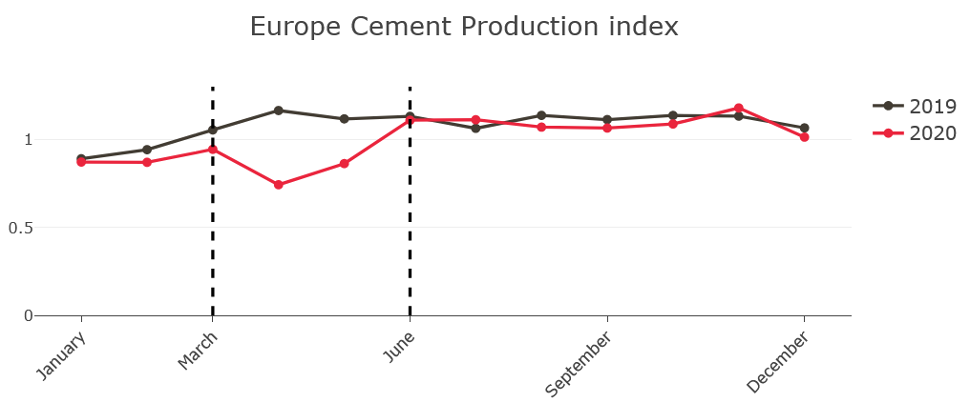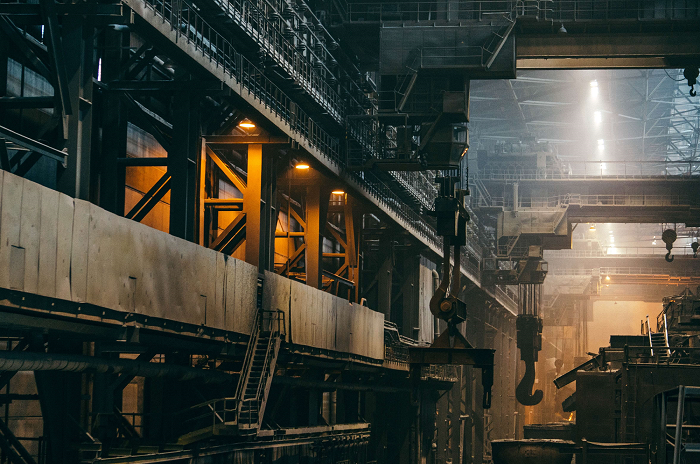In March 2020, when COVID-19 induced its first lockdowns across Europe’s leading economies, shutdowns swept through commercial and industrial sectors leaving few unscathed. On-the-ground operations were shut down, with traditional monitoring methods proving ineffective in extracting the realtime operational insights necessary for better decision-making. In the past year, despite the limitations of traditional monitoring methods, tracking and forecasting economic activity has become even more important than ever for all market stakeholders. This is where geospatial data come in.
Satellite imagery for cement production analyses
Kayrros teams leverage thermal satellite imagery to structure analysis on the heat signals captured over cement plant kilns. By combining different data sources, Kayrros has a unique view on these operations that cannot be obtained through traditional monitoring methods. The cement kilns, by far the most expensive equipment of the plant, practically define the productive capacity of the asset and must stay operational during the full time-span of production. By utilizing data derived from specialized satellites equipped with heat capturing sensors, Kayrros teams analyze the signals emitted from each kiln of each plant during the sintering process, with temperatures reaching almost 1500 °C.
Every week, Kayrros reviews the cement plant activity in over 100 European plants, distributed across the five biggest regional producers: Germany, France, Italy, the UK and Spain. Considering that the European cement industry supports more than one million employment positions with an active capacity to produce more than 200 million metric tons of cement, it is justifiably considered a strategic sector by most analysts as an indicator of economic growth. Since Europe represents almost 5% of global cement production, tracking the activity of the sector can provide crucial information on the status of the European economic cycles, residential and commercial buildings, and infrastructure spending.

(Source: Kayrros, © Mapbox, © OpenStreetMap. Improve this map.)
Cement Production Declines in 2020
The cement sector has often been considered as an essential productive segment of the global economy, with many governments excluding cement and construction operations from lockdown restrictions throughout much of the past year. Geospatial data show, however, that being permitted to operate is not a guarantee to maintaining output. Even though cement plants were largely operational throughout COVID-19, the negative impact of the pandemic and the subsequent policy responses to final demand – as well as the overall operational challenges faced by the industry players – have contributed to significant declines in production throughout 2020.
Kayrros measured cement plant activity declined across Europe
The dramatic fall of the European Construction Production Index had a direct impact on domestic cement plant operations. As expected, the strongest impact was during the first few months of lockdowns, from March to June 2020. Interestingly, this period coincides with the highest activity levels observed during 2019, especially during the month of April – which this year represented the period with the lowest annual production.
For the rest of the year, cement production activity remained at similar levels to 2019, which is consistent with the more flexible measures regarding construction and cement in place for the subsequent lockdowns.


About the Kayrros Platform
Kayrros is the leading global asset observation platform built on fundamental science, strong R&D and leading technology. With access to data on hundreds of thousands of industrial assets, Kayrros Platform users can track any industrial asset worldwide by applying a multitude of data sources, from satellite imagery to natural language processing. The agility of the platform allows for users to extract unique insights with ease and flexibility, ultimately leading to better informed decision-making.
In this case, Kayrros leveraged satellite imagery and advanced algorithms to monitor kiln activity. A rotary kiln is a structure that must be maintained in the range of 900-1500°K, with more than 40% of its heat dissipated into the atmosphere. When heat is dissipated, the structure emits infrared light, which is visible from space. Kayrros built a unique algorithm based on infrared satellite imagery to identify this heat and assess the activity of the kiln. Whenever satellites take a picture of a site, it automatically triggers the processing steps that will clean the image, crop around the area of interest, select the relevant information and return an activity signal, which is combined with the actual capacity of the cement plant. This algorithm is then applied to all cement plants in the Kayrros database to generate activity tables that are updated on a weekly basis.
By Nikolaos Antonopoulos, Jacky Kaub and Martin Esguerra

